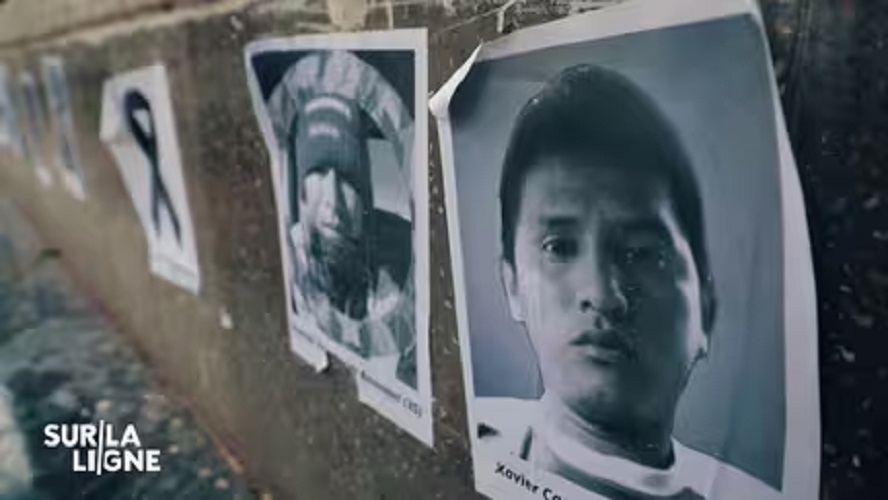Ayacucho, Peru’s Rebel City, Displays Faces of December 2022 Repression Victims on Cemetery Walls
Since the ousting of Pedro Castillo, the first “president of the poor,” Peru has been shaken by a severe political crisis. In this country fragmented by inequality and systemic racism, the repression against popular anger has been fierce, especially on December 15 in Ayacucho. Excerpt from the magazine “On the Line” from July 6.
A teacher, unionist, mixed-race, and hailing from the countryside, Pedro Castillo, who was elected in July 2021, embodied in Peru the first “president of the poor,” the revenge of indigenous people against the white elite of the capital Lima. Since his ousting on December 7, 2022, and subsequent imprisonment, Peru has plunged into a serious political crisis and the anger has not subsided. In the streets, millions of protesters have demanded the resignation of Dina Boluarte, the former vice-president who took over the reins of the country and declared a state of emergency. The repression has been fierce, as on December 15, 2022, when the army fired upon the crowd.
About 300 kilometers southeast of Lima, on the eastern slope of the Andes mountain range, Ayacucho (also known as Huamanga) felt a resurgence of the bloody repression it experienced during the 1980s with this suppressed popular insurrection. The city is the birthplace of the Shining Path, the Maoist group whose armed uprising, fueled by injustices and inequalities, led to a terrible repression and resulted in tens of thousands of deaths. While the current revolt is in no way comparable, this popular, Andean, and indigenous movement is already historic, as explained by a sociologist in the rest of this report from the magazine “On the Line.”
Around ten protesters killed by the army
On that Thursday, December 15, a portion of the protesters gathered in downtown Ayacucho decided to occupy the airport. As 150 people stormed the tarmac, another group threw stones at about fifteen soldiers at the other end of the runway. Suddenly, three of them responded with gunfire. For 48 hours, the army continued shooting, and about ten protesters were killed.
Ruth’s husband, 32 years old, was among the victims. Inconsolable, the young woman returns to the very spot where Leonardo collapsed, this fighter for social struggles who often told her, “Never kneel! Stand up, like a Peruvian.” “They were over there, and they shot from there,” she recounts. “There were many protesters. They were taking cover behind metal sheets. My husband raised his right hand, asking them not to shoot. That’s when one of the soldiers opened fire on him.”
Struck by a bullet in the abdomen, Leonardo died shortly after at the hospital. On the walls of Ayacucho cemetery, a photo of his face is displayed alongside those of the other victims. Like José Luis Aguilar, killed by a bullet to the head at only 20 years old.













































